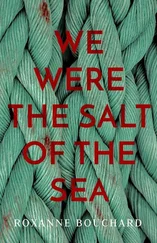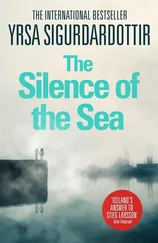Philippa had given birth to three more children and though one of them, a boy, died in infancy, two more girls — Elizabeth and Charlotte — survived.
However, the family’s happiness and prosperity was to be brief. A pandemic of bubonic plague erupted in Hong Kong in 1894 and, carried by shipborne rats, it spread to every country in the world, killing thirteen million people. It reached Sydney early in 1900. The first signs were hundreds of dying rats around the wharves of the Union Shipping Company and the slums and crumbling wharves of Darling Harbour.
The means by which the plague was spread were still barely understood, but Dr Ashburton Thompson, president of the Sydney Board of Health, was an authority on the disease.
Symptoms of the plague are shivering, rise of temperature, aching in the head, back and limbs, and a sickness. Great weakness succeeds with mental disturbance leading to coma or delirium. Death often occurs, however, before any characteristic symptoms are developed.
At an early stage dark spots or patches often appear on the skin produced by subcutaneous haemorrhage, and bleeding may also take place from the various mucous membranes. Bleeding from the lungs, though rare in recent epidemics, was regarded as a characteristic symptom of Black Death in its most virulent form.
By the second or third day the most distinctive features develop: one or more glandular swellings usually in the neck, armpits or groin. These generally break and lead to prolonged suppuration. In a few cases, carbuncles develop at a later stage of the disease.
There can be no doubt the disease can be conveyed from one person to another but it is exceedingly doubtful if contagion can be thus conveyed directly without some intermediary. The general opinion now is that rats are an essential intermediary for carrying the disease.
The plague may be conveyed from rats to humans by the intermediary agents of fleas sucking the blood of the rodents and afterwards inoculating the individual. If any dead rats are found about the premises, boiling water should be first thrown over the carcase to kill any fleas and then the rats can be destroyed without danger.
Such measures as white-washing houses and cleansing gutters and sewers are not really of the slightest effect in allaying the spread of the plague. As a precautionary measure it is advisable to use disinfectants freely in order to get rid of fleas and such like vermin. Cleansing a neighbourhood, however, may have the ultimate effect of driving rats into another district, so distributing the infected rodents over a wider area.
There must be no half-measures. If we want to get rid of the plague we must kill the rats. Material for disinfectant is a weak solution of oil of vitriol — sulphuric acid — in water, say a five per cent solution. Within houses other things are more suitable and necessary. Out of doors sulphuric acid will be all that is necessary and it is very cheap.
At Dr Thompson’s urgings, the city authorities began an extermination campaign, concentrating first on the wharves and stores alongside the harbour. All the people employed were inoculated against the plague and paid well above the normal rates. Floors were pulled up to remove dead rats, streets were cleaned of refuse and 179 loads ‘above the normal scavenging of the city’ were taken to the tip.
The Sydney Mail editorialized:
The attack of plague could prove a lasting service to our metropolis, what with the killing of vermin in all directions, the overhauling of our sanitary appliances and machinery, the cleansing of wharves, sewers, drains and streets, the disinfecting of dirty areas, the compelling of the City Council to shut up the vile garbage tip at Moore Park and devise more modern methods of dealing with refuse than Proverbial in old Jerusalem, and the warning which people have got to keep themselves clean, we should expect that in years to come Sydney will never be quite such a dirty, ill-kept and ill-managed city as it has been up to the present.
Despite the authorities’ efforts to eradicate infected rats, the first recorded human case of the outbreak of bubonic plague, a dock labourer, Arthur H. Payne, a labourer for the Central Wharf Company at Dawes Point, was placed in quarantine on 26 January. However, he had only a mild case of the disease and later recovered.
Tom became the second victim. His first-floor premises in Sussex Street lay just behind the harbour and the toilet drained through a broken pipe into the water. On the morning of Tuesday, 13 February, he removed five dead rats from the room. He fell ill while at work the following Saturday and remained at Sussex Street for two days before being taken home to Drummoyne. He died on the afternoon of Thursday, 23 February 1900, at the age of forty-six.
He had fallen heavily at work a few days earlier, damaging his abdomen, and at first doctors suspected peritonitis, but the speed and suddenness of his death, coupled with the earlier case of plague, led to a hasty post-mortem examination. It was carried out at three thirty that afternoon by Dr Frank Tidswell.
From specimens of blood taken from the body, Dr Thompson confirmed the cause of death as bubonic plague, contracted from the fleas the dead rats had carried. According to the doctor, such a sudden death was not unusual for the plague. ‘The symptoms may be rather mild but the poison takes its special effect on the heart.’
Tom was the first Sydney fatality from the outbreak. By the end of June over a hundred further deaths from plague had been recorded in the city.
Within an hour of the completion of the post-mortem, police had sealed off Tom’s business premises and home, and put his family and everyone else found there into immediate quarantine. Five policemen stood guard on the house, where thirteen people had been isolated.
Among them were Philippa and Julian Dudley, now aged seventeen, Alexander Parker, a clerk in the railway department, and his wife, Archibald McDonald, a handyman employed at the house who was ill with stomach pains and being closely watched for symptoms of bubonic plague, Mrs Hoskins, Mrs Ludgate, Peter Gorman, Thomas Carrie and three boys, George Grear, Norman Mackie, and James Cox, who had arrived at the slip in a yacht that morning with a Japanese man by the name of Erakwa Bush. Several of them had gone to the house only to express their condolences, but all were taken into quarantine.
Four more people were quarantined at the premises in Sussex Street: Tom’s daughter Philippa and Arthur Wilson, a friend of the family she was later to marry, Mr Shannon, a sailmaker, and the book-keeper, William Wetherill.
All of them, together with two more people later identified as at risk — an eighteen-year-old girl called Maggie Beattie and Frederick Glebe, a haberdasher who had visited the house during Tom’s illness — were taken to the quarantine station on the North Head above the entrance to Sydney Harbour.
The house and business premises were fumigated by the authorities and Dr Thompson reported that the sewerage in Sussex Street was defective. ‘One morning Captain Dudley removed from the premises no fewer than five dead rats, being assisted in the work by one of the men now at the quarantine station.’
Inadequate sewerage was not unique to Tom’s premises. A reporter extracted a statement from a Board of Health spokesman that not more than one house in every twenty-two was properly connected with the sewers. The statement was hastily withdrawn, but the board later admitted that it had prosecuted 440 owners or occupiers whose sewerage arrangements were ‘insanitary or incomplete’ since the start of the year.
Dr Thompson and Dr Pinkburn supervised the arrangements for Tom’s funeral and interment. His body was wrapped in a sailcloth soaked in a 5 per cent solution of sulphuric acid and placed in a watertight coffin, which was then filled to the brim with more sulphuric acid and the lid sealed down. The coffin was enveloped in a succession of sailcloth sheets saturated with the same ferocious disinfectant and a jacket of ‘asphalt cloth’ was then wrapped around it.
Читать дальше











